This post may contain affiliate links. Please see our disclosure policy.
Fireweed jelly is a delicious way to use fireweed blossoms in season. Also known as rosebay willowherb, these tasty edible flowers grow like weeds and are commonly the first new colonizers of burn sites, which explains why they’re more commonly known as “fireweed.”
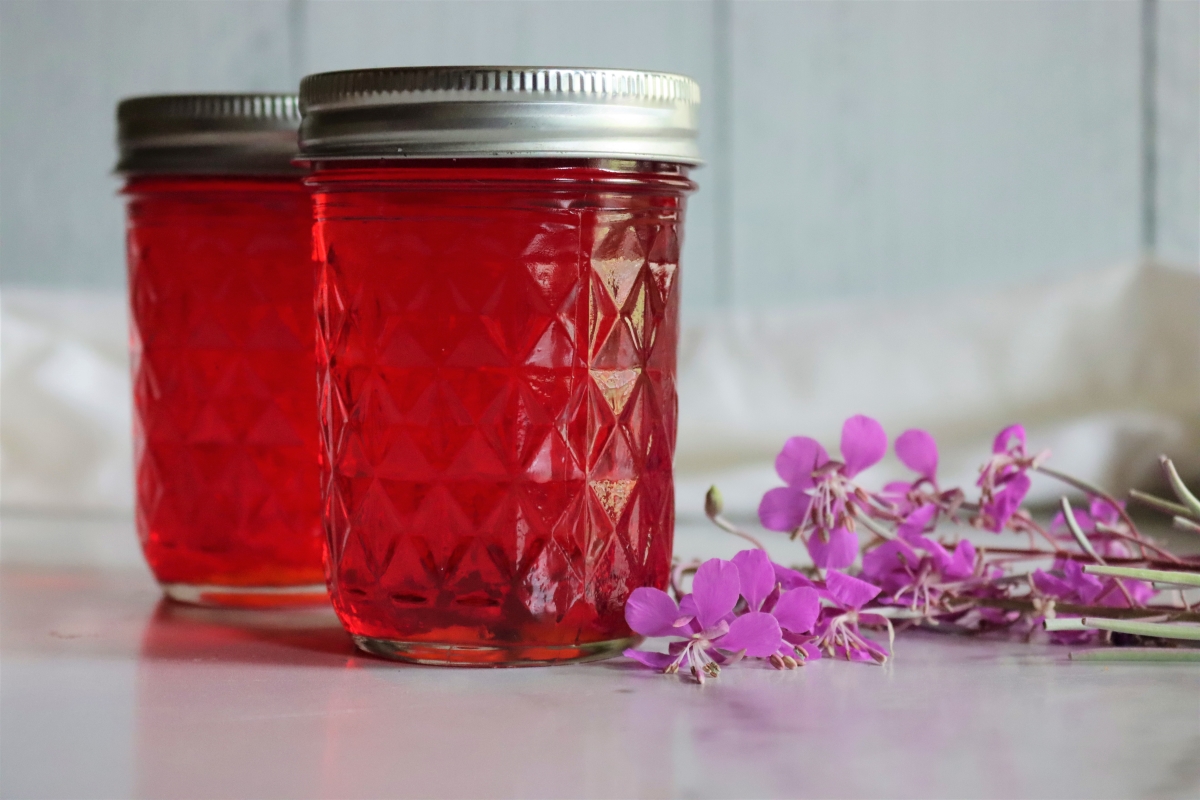
Fireweed is a common sight all across the country, especially in disturbed areas. It’s one of the first plants to colonize after fires and floods, as it loves disturbed soil.
While it grows everywhere, not everyone knows that it’s an edible flower!
It’s especially popular in northern regions where we can chart the progress of our short summers as the blossoms climb the stalk. Those last fireweed blossoms are beautiful, but they’re bittersweet. It means it’s the very end of summer, and we’ll be back into a long northern winter before we know it.
Making flower jellies is one of the ways we preserve the flavors (and colors) of summer all year long, and there’s nothing like a bright pink splash of fireweed jelly on my toast mid January to remind me of warmer days.
(If you’re not familiar with fireweed, please read my guide to foraging fireweed before harvesting.)

A Quick Look at the Recipe
- Recipe Name: Fireweed Jelly
- Recipe Type: Flower Jelly Recipe
- Canning Method: Waterbath Canning
- Prep/Cook Time: 30 Minutes
- Canning Time: 10 Minutes
- Yield: 4 to 5 half pint jars
- Jar Sizes: Quarter Pint, Half Pint or Pint
- Headspace: 1/4 inch
- Ingredients Overview: Edible Flowers, Water, Lemon Juice (not optional), and sugar
- Difficulty: Easy! You’re basically making a quick tea and setting it with pectin.
- Similar Recipes: The process is very similar to making other wild foraged flower jelly, including Clover Jelly, Elderflower Jelly, Dandelion Jelly, Redbud Jelly, Grape Hyacinth Jelly, or Violet Jelly.
Ingredients for Fireweed Jelly
For a batch of 5 half-pint jars of fireweed jelly (8 oz each) you will need the following:
- 3 to 4 cups cleaned, de-stemmed fireweed blossoms
- 1 box (1.75 oz) pectin (regular or low sugar)
- 1 to 4 cups sugar (depending on preference)
- 4 cups water
- 2 Tbsp Lemon Juice (bottled)
You can use either regular Sure-Jell pectin or Sure-Jell low sugar pectin for this recipe. Just be aware that when using standard Sure-Jell pectin you will need to add at least 4 cups of sugar (as this pectin only jells with a 1:1 sugar to water ratio).
If using Sure-Jell low sugar pectin you can use less sugar (as little as ½ cup).
For low-sugar jellies, it is recommended that you use 1 to 2 cups of sugar. Sweeter jellies can be made with more sugar (2 to 3, or even 4 cups sugar). Adjust for your individual taste!
The lemon juice in this recipe helps balance the flavor, but it’s also essential for preservation and makes the jelly safe for canning. Don’t skip it!
When you harvest the blossoms, watch out for pollinators. The bees really love these delicate, short lived blossoms!
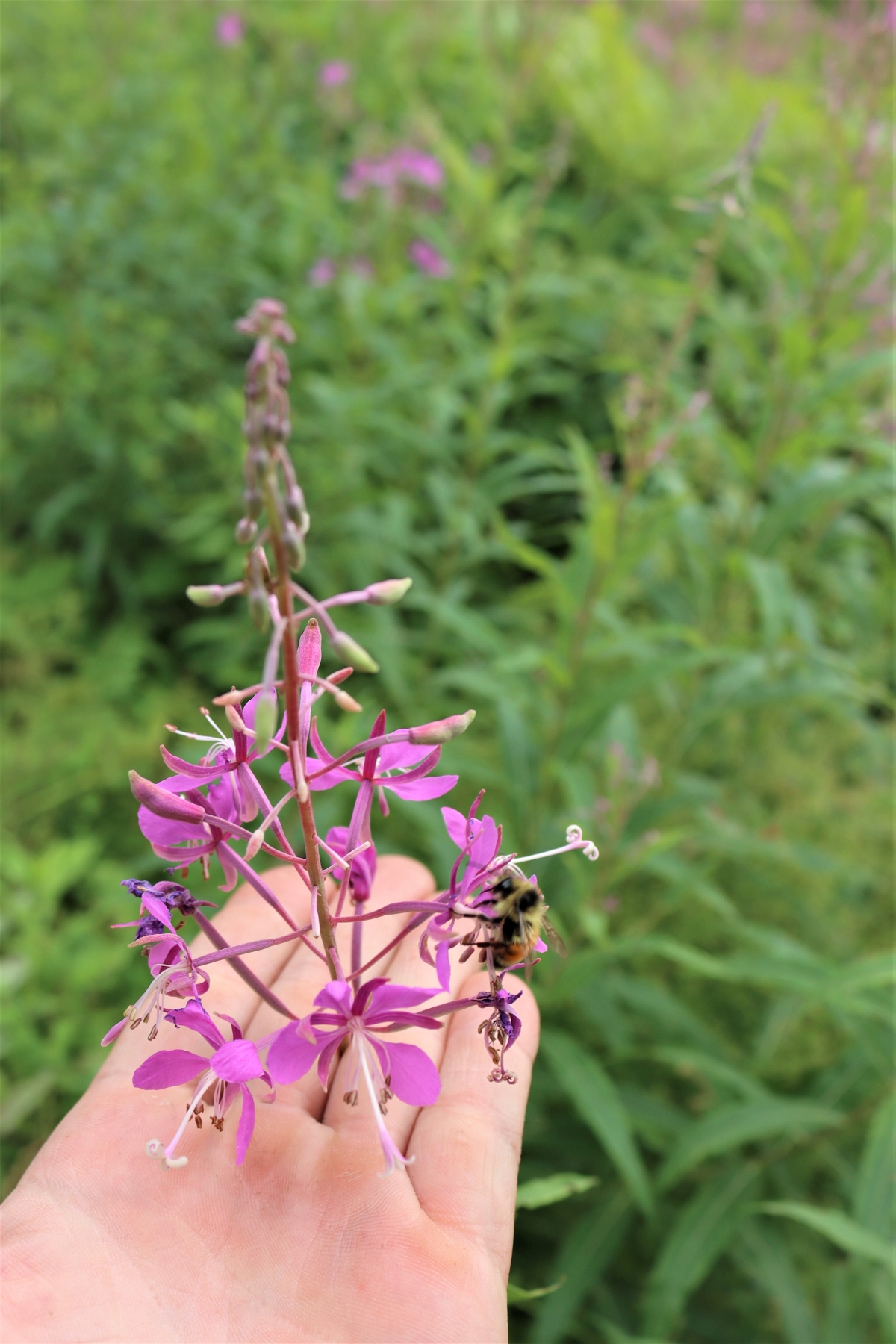
How to Make Fireweed Jelly
Begin by gathering your blossoms. You’ll want to collect your fireweed from an area that is clean of pesticides, herbicides, and other contaminants (such as roadside pollution or drainage). As always, be sure the herbs you are collecting are fireweed (Chamerion angustifolium) and not toxic or look-alike flowers.
Next, you’ll need to harvest your fireweed petals – you’ll be needing 3 to 4 cups.
You’ll want to pick the blossoms from the stems, discarding any green, non-blossom pieces. Remove any dirt, debris, or lingering insects from your petals. You should have about a quart (4 cups) of blossoms.
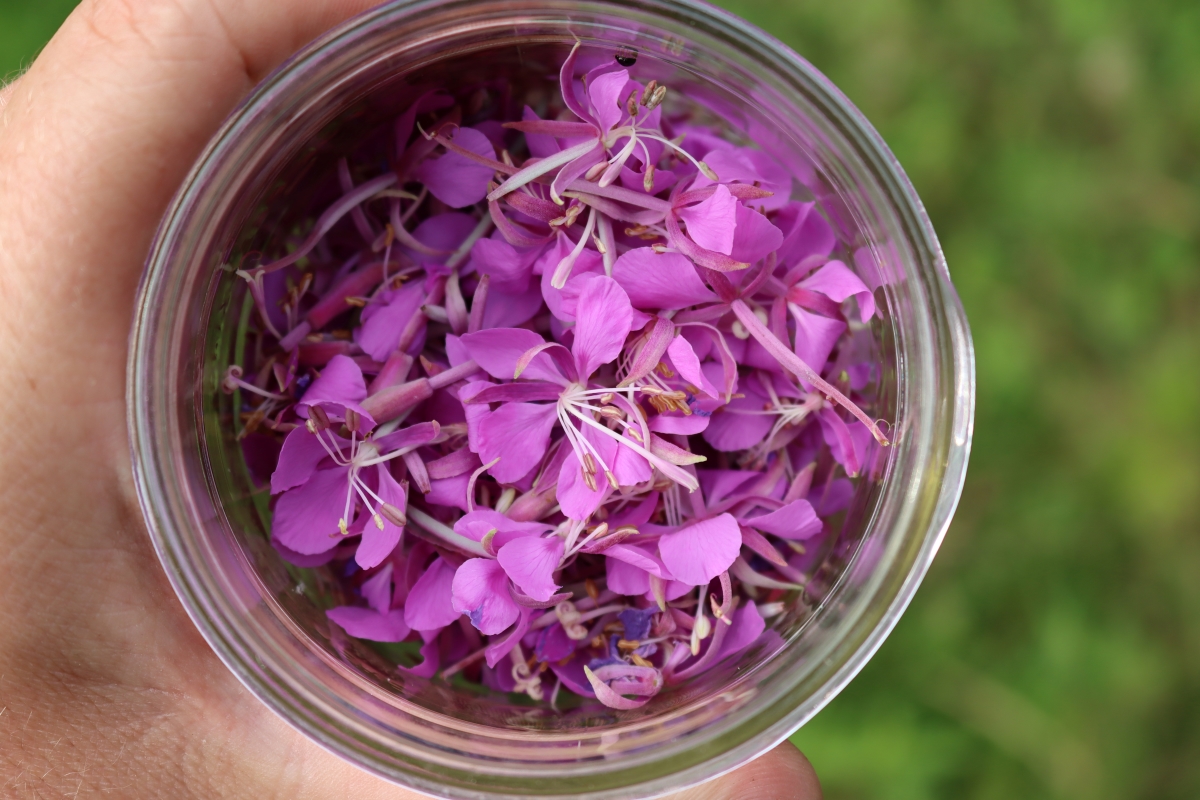
Next, we’ll be making our blossom tea.
In a heat-safe container, pour a quart of boiling water over the top of your petals, allowing them to steep and infuse into a fragrant, floral tea. Steep for about 10 to 15 minutes.
Many blossoms are slow to give up their color and flavor, but fire weed has delicate flowers and they really only need 10 to 15 minutes to infuse. Your fireweed tea should be a pinkish to purple color.
Later on, it’ll turn bright pink when you add the lemon juice.
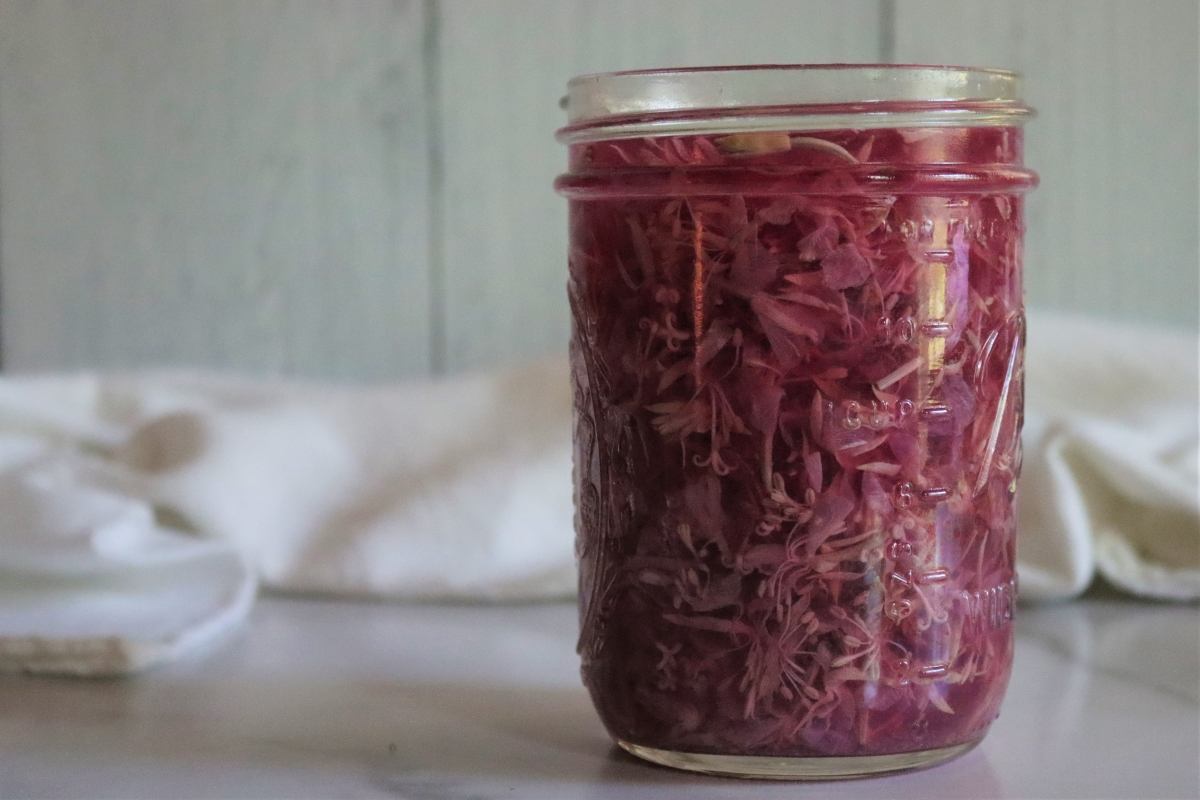
Strain the flowers from your tea using a fine mesh sieve or strainer lined with cheesecloth, adding the liquid to a jam pot or saucepan. Add in 2 tablespoons of lemon juice (this brings out the flavor of the flowers in addition to giving the tea a lovely, pink jewel tone). Bring to a boil and add pectin.
Let the floral tea, lemon juice, and pectin boil for at least a minute before adding any sugar – the pectin needs to be incorporated into the mixture first. If you add the sugar too soon the pectin will denature, resulting in a jelly that won’t set.
Once your mixture of tea, lemon juice, and pectin has boiled for a full minute, add in the sugar and stir. Return to a boil.
Boil for 1 full minute. Your batch of fragrant, fireweed jam is now complete and ready to be ladled into jars (be sure to leave ¼ inch headspace).
This recipe should yield about 40 oz (about 5 half-pint jars) of fireweed jelly when made with 4 cups of sugar. If using less sugar, the batch will be slightly smaller.
This jelly can be refrigerated, frozen, or canned. If choosing to refrigerate instead of canning, simply allow your jars to cool to room temperature before refrigerating or freezing. Be sure to leave additional headspace and use freezer-safe jars when storing in the freezer. Refrigerated jam will last up to a month – frozen jam up to 6 months.
If canning for gifting or long-term storage, be sure to prepare your jars before cooking your jam. Ladle jam into prepared jars, ensuring the rims are clean of any residue (this ensures a safe, tight seal) and process the jars in a water bath canner for 10 minutes.
Jams that are properly canned will keep for 12 to 18 months (and will be safe for consumption longer, although their peak quality will have passed).
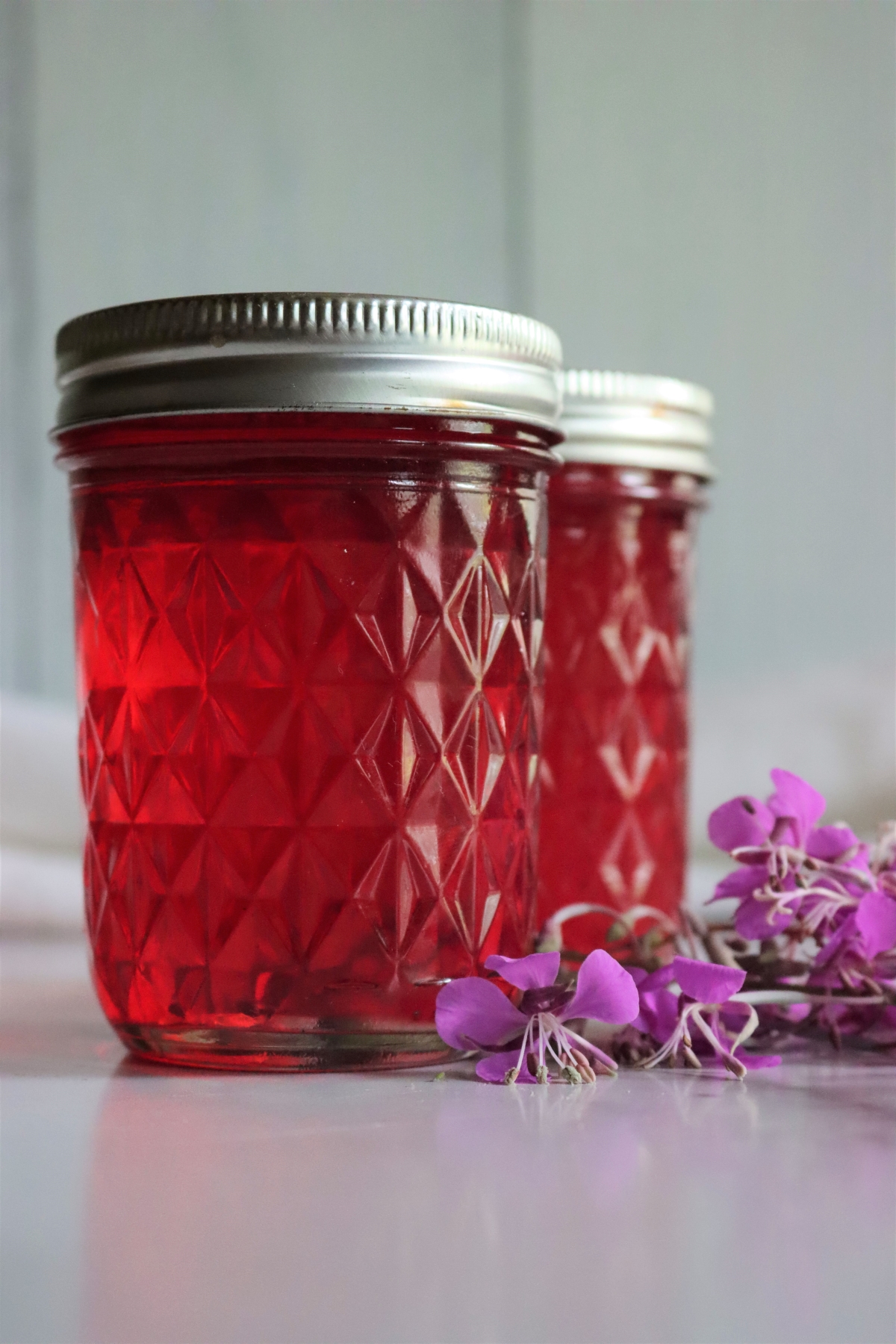
Fireweed Jelly Variations
Occasionally you will find floral and herb jellies that call for additional ingredients to create more complex or unusual flavors. You may wish to add other ingredients such as these to complement fireweed jelly.
As fireweed jelly already possesses fruity undertones, many embellish the recipe by adding fruit or berries. Try raspberry fireweed jelly to enhance the natural fruit essence.
Fireweed champagne jelly is yet another variety. Simply add 2 cups of champagne along with your lemon juice for this decadent concoction.
Canning Fireweed Jelly
This jelly is lovely enough that you may simply wish to refrigerate or freeze it for immediate use. Refrigerated jellies will stay good for up to a month. They can also be frozen for up to 6 months, just be sure to use freezer-safe jars and allow extra headroom for expansion.
But if gifting these bright, beautiful jellies or storing at room temperature, canning will be needed.
Prepare a water bath canner before cooking your jelly. Once the jelly has thickened to the correct consistency, ladle into prepared jars leaving adequate headspace (about ¼ inch). Clean the rims with a damp towel to ensure a tight and safe seal and cap with 2-part canning lids.
Next, process in a water bath canner for 10 minutes (add another 5 minutes if above 6,000 feet elevation).
Carefully remove jars after processing, allowing to cool on a towel in an area of your kitchen that is out of the way. Check your seals after 12 to 24 hours.
If properly canned, these jellies will keep for 18 months. After this, their quality declines, although they are often still food-safe. Be sure to refrigerate after opening.
Unsealed jars, once cooled, should be immediately stored in the refrigerator or freezer.
Ways to Use Fireweed Jelly
Fireweed jelly has a slightly citrusy, tangy flavor, but with a floral sweetness. Its jewel-toned, magenta coloring is gorgeous to behold in glass jars, making it apt for gifting. Additionally, it is wonderful to pair with a whole host of culinary creations.
Slather on scones, croissants, muffins, and toast with cream or salted butter for a tranquil afternoon tea. Looking for a more savory pairing? Spread on some whole grain bread with a swath of creamy peanut butter and banana slices, and you’ll find yourself with a PB&J of delicious proportions.
If you tried this Fireweed Jelly Recipe, or any other recipe on Creative Canning, leave a ⭐ star rating and let me know what you think in the 📝 comments below!
And make sure you stay in touch with me by following on social media!
Flower Jelly Recipes
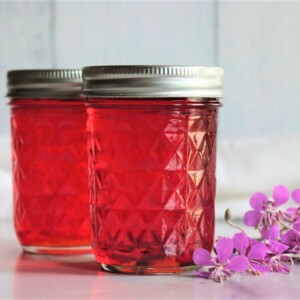
Fireweed Jelly
Equipment
Ingredients
- 3 to 4 cups fireweed blossoms, harvested and cleaned
- 1 box powdered pectin, 1.75 oz pectin, 6 Tbsp. (regular or low sugar)
- 1 to 4 cup sugar, depending on preference, see notes
- 4 cups water
- 2 Tbsp Lemon Juice, bottled
Instructions
- Begin by gathering and harvesting your fireweed. You’ll just be needing the blooms for this recipe, so discard any stems and green parts from your fireweed blossoms. Clean the remaining blossoms of any lingering debris or dirt.
- Place blossoms in a heat-safe container and pour boiling water over the blossoms. Allow to steep for 10 to 15 minutes.
- Strain the flowers from the mixture (using cheesecloth or fine mesh) and discard. Pour your fireweed-infused tea into a saucepan or jam pot and add the lemon juice.
- Bring the tea to a boil and add the pectin.
- Let the tea, lemon juice, and pectin boil for a full minute to allow the pectin to incorporate into the mixture.
- Next, add sugar and stir to incorporate. Return to boil. Boil for another full minute.
- Your fireweed jelly is now complete! Ladle into jars leaving ¼ inch headspace. If canning, ladle into prepared canning jars and process in a water bath for 10 minutes. (Increase canning time to 15 minutes if above 6,000 feet in elevation.)
Notes
Sugar Amounts (and Low Sugar Options)
If using standard pectin, you must use a 1:1 ratio of liquid to sugar. That means for 4 cups flower blossom tea, you'd need a minimum of 4 cups sugar to get the jelly to set. That results in a very sweet "old-fashioned" jelly. To reduce the sugar, simply use low-sugar pectin instead and then make the jelly as instructed but using less sugar. I suggest sure jel low sugar, which is very dependable. Lowering sugar will also lower yield, and the yield of 5 half-pints is for a full sugar recipe. Expect 3-4 jars with a lower sugar recipe. If using Pomona's Universal Pectin, the instructions are different as that is a 2 part low sugar pectin. Follow the instructions provided in the Pomona's box for mint jelly. If using liquid pectin, the order of operations is different (pectin is added last, sugar first). Liquid pectin also requires a lot more sugar to set (7 cups sugar to 4 cups liquid). I don't recommend liquid pectin because of the high sugar levels required for set, but it will work if that's your preference.Nutrition
Nutrition information is automatically calculated, so should only be used as an approximation.
Floral Jellies
Looking for more tasty floral jellies to try?
Wild Foraged Canning Recipes
There’s more than one way to put up a little wild-foraged goodness!
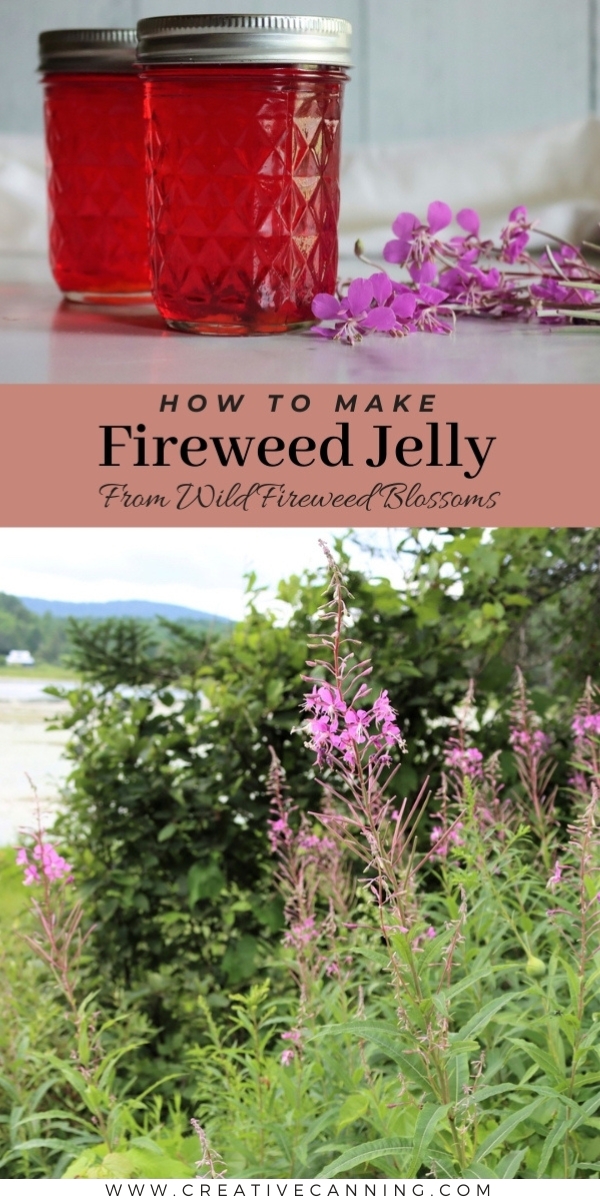
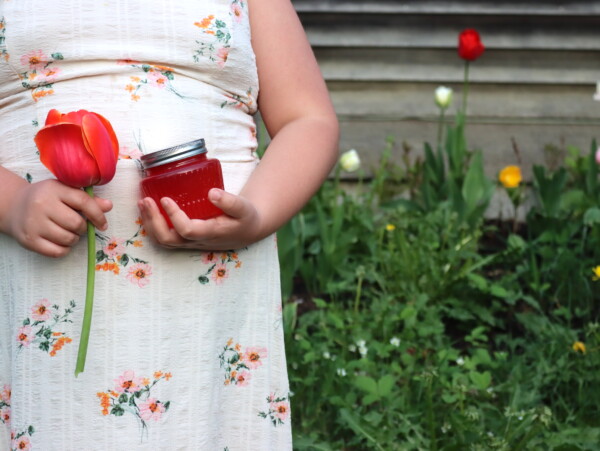
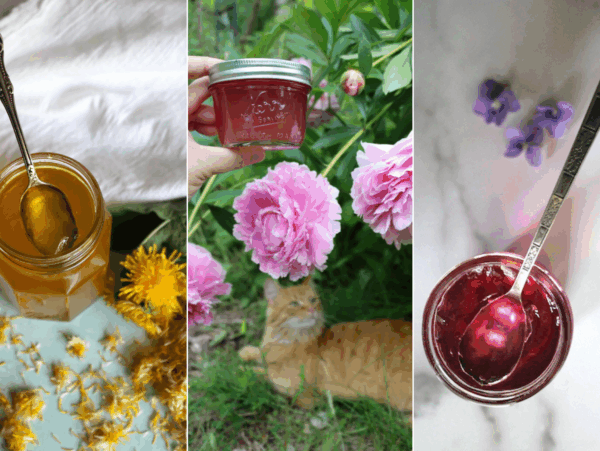
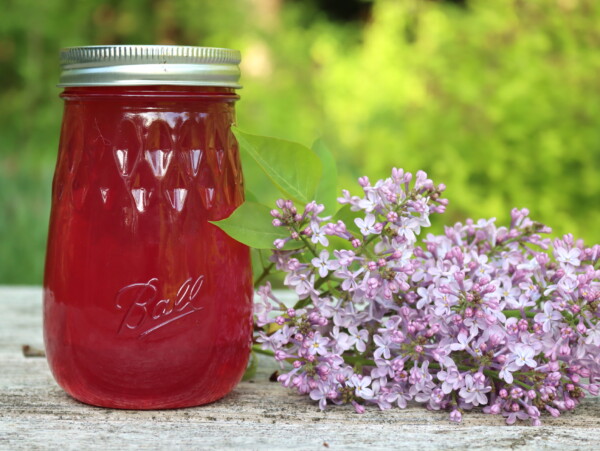
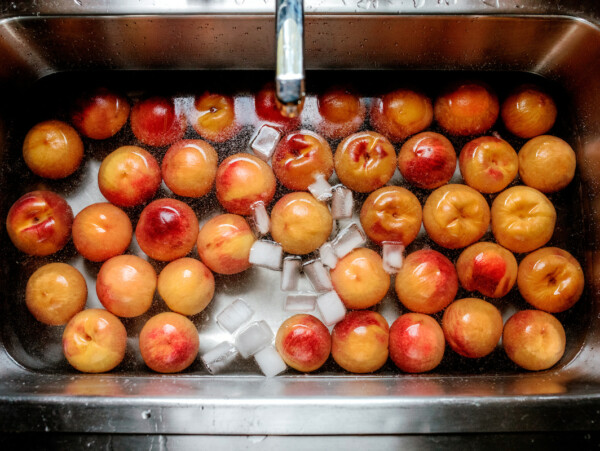
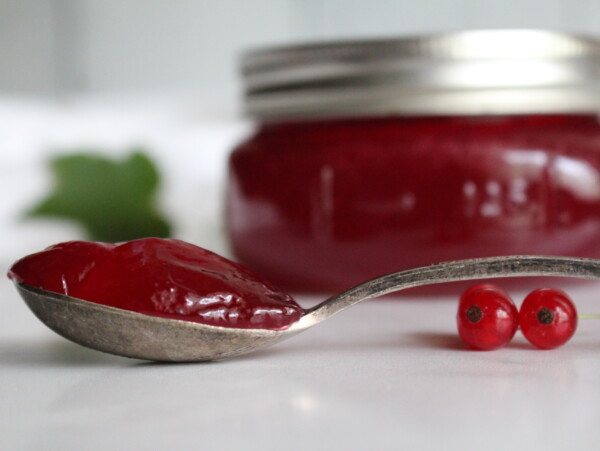
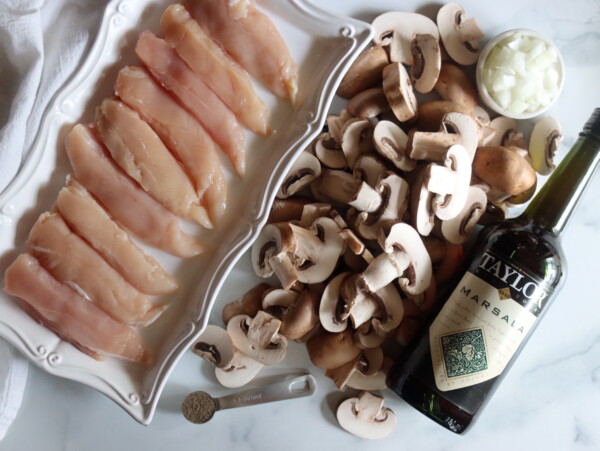
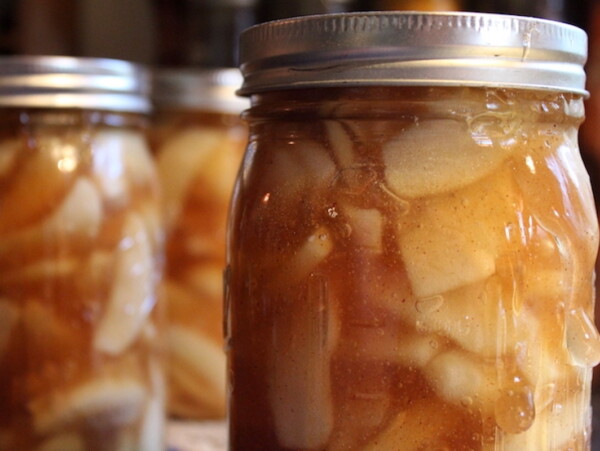
This one’s a fun tradition to make every year, with the wild foraged fireweed blossoms that mark the passage of our short northern summers.
Hello! Our firewood is about ready to bloom! I’m excited to try this recipe, but a little dampened by you mentioning in a different post that the firewood was underwhelming.
Could you explain why it was a “shouting re-make me” jelly?
I tried my 1st floral jelly today with the last of my roses and some johnny- jump-ups! Tastes almost like honey!
I don’t quite understand your question here. I re-read the article to see if I could figure out what you’re talking about, but no luck. It’s a simple flower jelly that’s popular in areas where fireweed grows. It has a light berry like flavor, and it’s a fun gift. While it’s not my favorite flower jelly, it’s still tasty. At this point, I’ve made dozens of different types of flower jellies, so the competition is pretty stiff.
Thanks for getting back, and giving a little more on the taste.
The comment about it that made me curious was written in the Violet Jelly post ;).
I picked some fireweed today, and have it making “tea”. 🙂
Thank you for the inspiration for new, creative jellies.